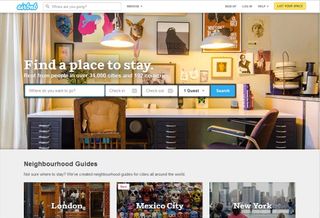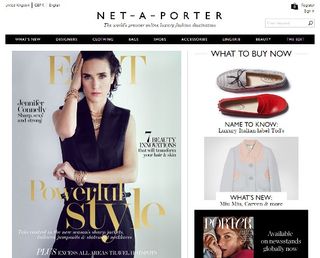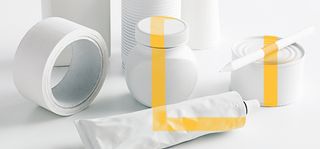What are the must-know trends in luxury branding?
The Future Laboratory's Tom Savigar will share expert insights into luxury branding at Impact Conference. Here, he provides a fascinating snapshot of the field in 2014.
Branding in the luxury market is in a state of flux, says Tom Savigar - chief strategy officer and partner at trend forecasting agency The Future Laboratory - and design agencies need to respond accordingly to stay ahead of the game.
Working closely with top brands such as Lamborghini, HSBC, Courvoisier, and BMW, Tom and his team consult on everything from strategy and market positioning to guidance on specific campaigns, as well as providing invaluable consumer insights.
He'll be discussing luxury branding in more detail at Impact, Computer Arts' branding conference, on 6 March. Here, he provides a fascinating snapshot of the field in 2014, from the rise of the experience economy to so-called 'womenomics'…
Why is trend forecasting important?
The pace of change for consumers has become rapidly accelerated. Economic turmoil, political and social change, rapidly growing new economies - shifting the global balance of power - as well as the total digitization of society to the way we socialise, receive information and shop, is creating an atmosphere of constant evolution and competing needs. Brands, especially luxury brands, need to present global strategies. Getting it 'wrong' is not an option: they have to be ahead of the curve always.
Forecasting works because it works outwards from the consumer. Everything we do at the Future Laboratory, and through our research and publishing division LS:N Global, is looking at emerging trends and shifts but with analysis as to what it says about consumer sentiment, how that's changing and how that might evolve going forward. Understanding consumer headspace is also more important than ever for brands as the relationship between brand and consumer has undergone a huge shift too.
Driven by social media, turbulent times, and the rise of digital culture, consumers expect to be involved in constant dialogue with brands, and dictated the product they buy. They also consume as communities and in collaboration (see the rise of Airbnb). We call this generation C. But the upshot for brands is that they need to fully understand consumer behaviour.
What are the main challenges facing the luxury market, given the fast-changing economic climate?
For a long time luxury has remained immune from economic turmoil as emerging markets have supplied them with lots of growth. While there is plenty of growth left in these regions, China, in India, in sub-Saharan Africa and Southeast Asia, the outlook is becoming more challenging. Luxury brands have to be more adaptive and tenacious.

China's tide of exponential growth is slowing down, and simultaneously luxury tastes in that market are changing quickly. The anti-opulence sentiment introduced by the government, and crack down on gifting, mean that there's not the same market at the top end as there was.
One of the key challenges for luxury brands is that with so many markets the needs of brand, product and message can often be polarised. It's a fine juggling act. Analysts say the next wave of growth in luxury is going to come from masstige, and contemporary luxury, due to both the rise of middle class markets, but also rising numbers of affluent millennial consumers who seek 'everyday' luxury. The challenge for brands is to introduce products that take advantage of this shift while also seeming exclusive, retaining brand equity, and appealing to high net worths.
One other issue is price. The price of luxury goods has risen rapidly, way above inflation. A bag now easily costs £2,000. Net a Porter recently put a £32,000 skirt on its site. The average price of a blazer can now be £3,000.

The problem with this is that there is now competition from contemporary brands, such as Sandro, Maje, and Carven, which have their own design point of view (and also fabulous quality. It's reaching the point where consumers might start asking, when faced with a mainline designer item, is it that much more special?
How can branding agencies tackle these challenges?
I think transparency is one key way that clever luxury brands are imbuing goods with a sense of quality, while also proving ethical credentials. We've seen a wave of luxury brands take active, and very public control over their supply chains, buying tanneries, and then using their production processes to showcase the craftsmanship, traceability and quality of goods. In an atmosphere where consumers are wary of cheap production, factories, and also becoming increasingly aware of the mark-ups luxury brands make on goods, this is a clever comeback.
I also think it's clever the way that brands like Burberry, Dior, and Chanel have started launching separate, dedicated 'Beauty Temples'. All three of these brands has launched beauty flagships in London's Covent Garden recently, with all the bells and whistles and experience you'd expect in a big luxury fashion store. This has monumentalised their beauty collections, making them seem exclusive, but has also cleverly separated them - and that entry point consumer - away from their fashion stores, which they can then make feel even more exclusive.
Can you identify any nascent trends that designers should be aware of?
Overall, luxury is moving away from 'stuff' to experience. Experience-based luxury is now the fastest-growing area of luxury. Travel, spas, restaurants etc. People are prioritising these and spending on them. Hence, you have groups like LVMH moving in to resorts.
Womenomics is also a trend. From China to the US to Europe, there are rising numbers of affluent, educated, professional women shopping for themselves. This means that luxury brands need to rethink how they communicate - women want to be talked to differently. Already, Gucci has tapped in to this with its Chime For Change female empowerment platform. Historically, luxury has been bought often for women by men. Therefore luxury has been marketed to men. Brands - including cars, watch brands - are having to recalibrate to appeal to affluent independent female consumers.

Finally, there is a major convergence occurring between tech and luxury. Angela Ahrendts from Burberry's move to Apple is telling. Apple also just hired ex Yves Saint Laurent CEO Paul Deneve. It will be interesting to see the next move as wearable tech moves in to fashion.
Already tech brands have been repositioning to reach tech-savvy female audiences through fashion collaborations, and partnerships with fashion retailers like Burberry (Apple and Burberry for the Apple iPhone 5s) and magazines like Vogue (which recently has featured Google Glass in fashion shoots). Consumers are embracing wearable tech devices, but until now they've been quite clunky and not that design-led. As wearable tech expands we expect this to be refined.
To what extent is the average consumer prepared to pay more for quality design and finish?
As the 'experience economy' continues to grow, consumers will become more discerning, discriminating, restrained, and curating in their products at every level. It will be about buying one, fabulous item, with a great story, and something that will last, rather than something that damages the environment.
You can already see this in magazines. We've seen the rise of luxury, independent, artisanal and connoisseur magazines as a counterpoint to everyday magazines and glossies. There;s a sense of 'specialness' to stuff, which is becoming a key motivator in purchases.
Is a more timeless, classy aesthetic generally preferable in this market?
Maybe in former years, but these days brands are having to think outside the box. It's become sport to collaborate with the latest leading creatives, such as new store designers, branding agencies, make-up artists and avant garde creatives, as well as reinforce a sense of modernity, relevance and connection to today.
This, I think, has been driven by the rise of Millennials as a luxury consumer. Luxury brands have had to appear less lofty, and more future facing. They've had to engage them in the creative process, and in dialogue. And also have a point of view - they need to be seen as more than brands, as cultural curators.
Save 20% on your ticket to Impact

You can expect more fascinating insights from Tom in his keynote talk at the Impact Conference on 6 March – a new one-day event from the makers of Computer Arts and Creative Bloq.
If you work in branding, Impact is an event you can't afford to miss– and we're offering Creative Bloq readers a massive 20 per cent off the ticket price. Simply:
- Visit the website
- Enter your registration details
- Add this Promotional Code when prompted: FRIENDS20
Want to know more about Impact? Click here and we'll give you all the details.

Thank you for reading 5 articles this month* Join now for unlimited access
Enjoy your first month for just £1 / $1 / €1
*Read 5 free articles per month without a subscription

Join now for unlimited access
Try first month for just £1 / $1 / €1
Get the Creative Bloq Newsletter
Daily design news, reviews, how-tos and more, as picked by the editors.
The Creative Bloq team is made up of a group of design fans, and has changed and evolved since Creative Bloq began back in 2012. The current website team consists of eight full-time members of staff: Editor Georgia Coggan, Deputy Editor Rosie Hilder, Ecommerce Editor Beren Neale, Senior News Editor Daniel Piper, Editor, Digital Art and 3D Ian Dean, Tech Reviews Editor Erlingur Einarsson and Ecommerce Writer Beth Nicholls and Staff Writer Natalie Fear, as well as a roster of freelancers from around the world. The 3D World and ImagineFX magazine teams also pitch in, ensuring that content from 3D World and ImagineFX is represented on Creative Bloq.
